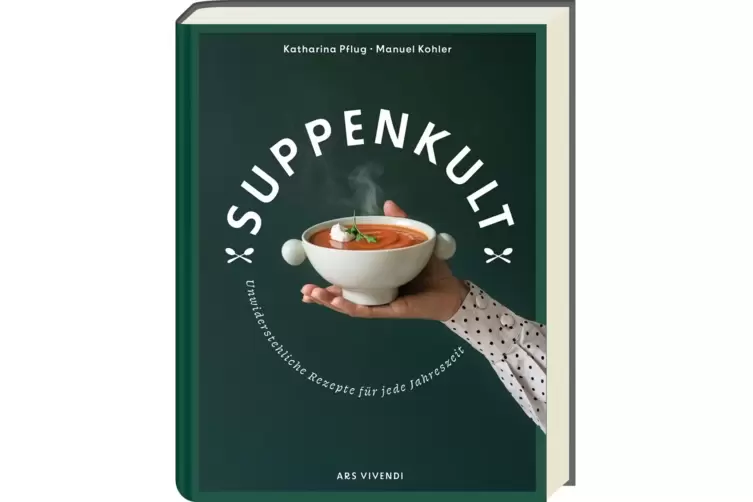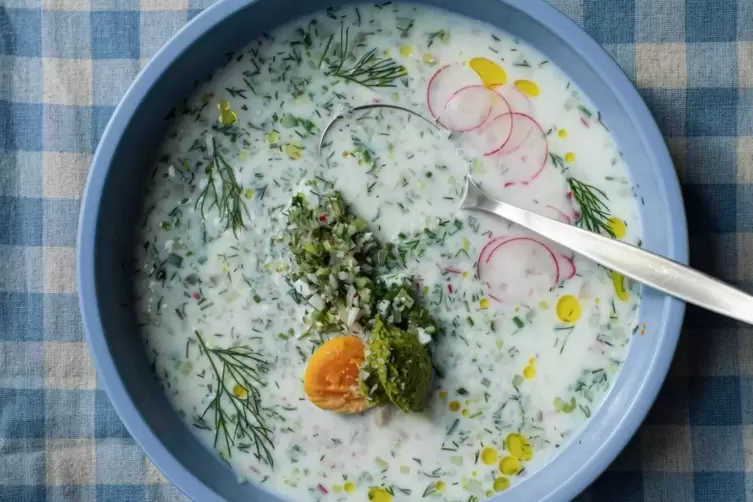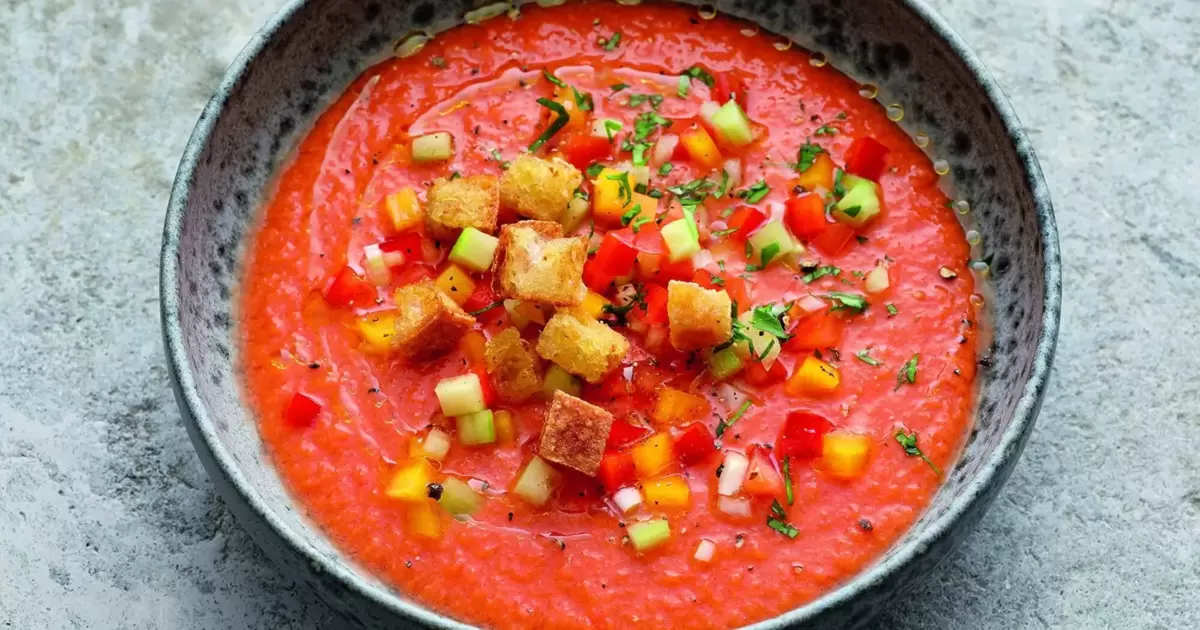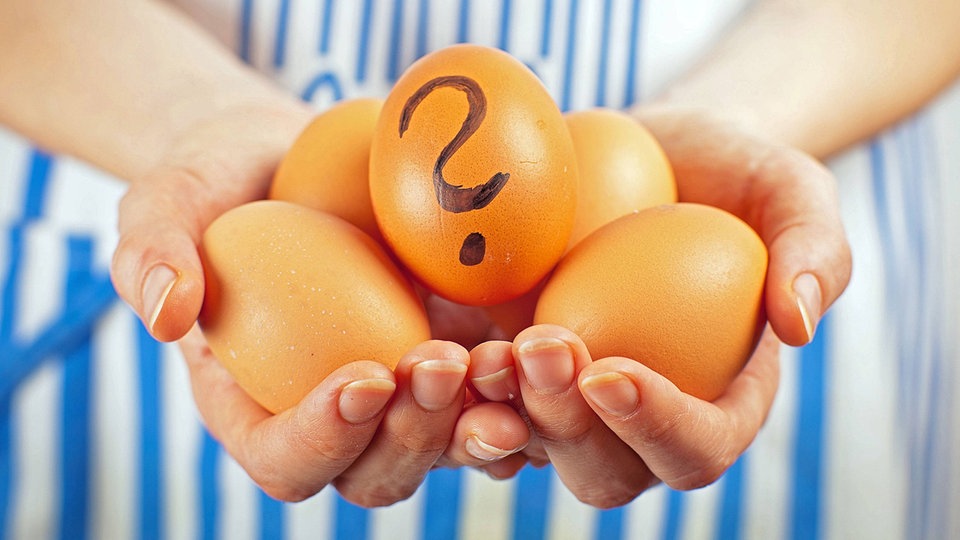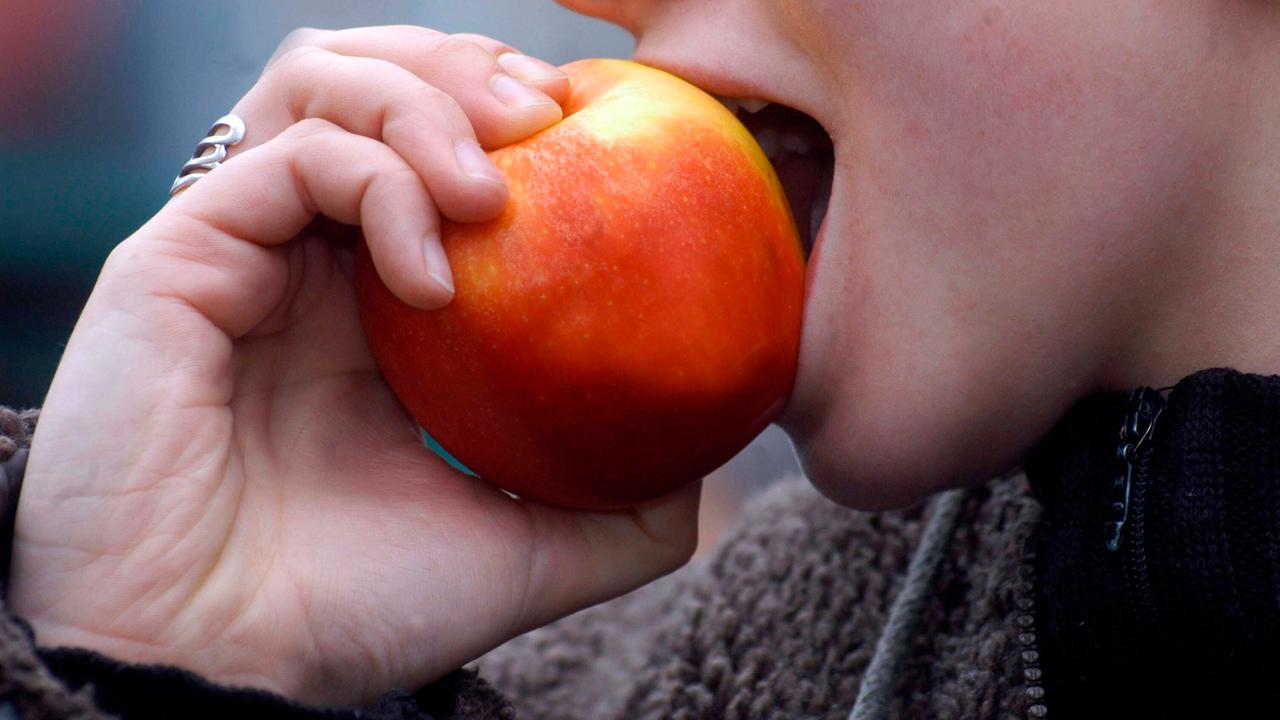Stuttgart/Venningen (dpa/tmn) – Soups are only for cold days! This rumor is refuted not only by Spain’s well-chilled gazpacho, but also by Poland’s cold okroshka. Soup is always good, even in summer. “Cold soups cool you from the inside, fill you up, but are not heavy on the stomach and provide you with lots of nutrients,” says food blogger Thyra from Stuttgart. She runs a soup blog with lots of different options.
Uncomplicated light summer dish
Thyra raves about a well-chilled Vichyssoise, the French classic made from potatoes, leeks and cream. For cookbook author Matthias Mangold from Venningen in the Southern Palatinate There is hardly a more refreshing dish in the warm season than a cold vegetable soup. And the chef Manuel Kohler from Nuremberg shows variations from different cultures in “Soup Cult. Irresistible Recipes for Every Season”, including a Japanese cucumber soup with fish tartare.
Cold soups are uncomplicated and usually quick to prepare. “Especially in regions or countries where both heating and cooling down require a lot of energy, things are used as they arrive in the kitchen,” says cookbook author Mangold.
Not everything can be prepared raw
“Cold doesn’t mean that it hasn’t been cooked. Cucumbers can be prepared cold and then form the basis,” says Manuel Kohler. Starchy foods such as potatoes or beans must be cooked.
For Thyra, it’s a question of personal taste and the way it’s prepared: “There are two ways to prepare cold soups. First, I can cook the soup and then cool it down, like zucchini or potato soup.” Her absolute favorite is Vichyssoise made from potatoes, leeks and cream. It’s cooked and then cooled down. For Thyra, the soup from the repertoire of fine French cuisine is an absolute must on hot summer days. Her tip: Cook the soup the day before so that it’s really well chilled. Trout caviar is a great topping.
Vegetables or fruit that can be processed and eaten raw are also suitable for a cold soup. Peas, zucchini and cucumbers are perfect. A cold cucumber soup with dill or borage is probably one of the most well-known summer soups. It not only embodies freshness and lightness, but is also quick to prepare. If you prefer something more oriental, you should season it with black cumin.
The absolute freshness of the ingredients is crucial. “While a hot soup in winter can forgive you if leftovers are used in it, squashed ingredients in cold dishes are immediately noticeable,” says Matthias Mangold. They can also be a bacterial hazard. The author from the Palatinate lets the soups sit in the fridge to enjoy “a real kick of freshness” when the outside temperature is warm.
All foods that are used raw should come from the refrigerator. This makes preparation quicker. Tomatoes are an exception. They should be at room temperature and processed as such.
Use seasonal fruits and vegetables
In principle, almost all types of fruit and vegetables are suitable for cold spoon dishes. Mangold always chooses what is in season. He also wonders whether the price-pleasure ratio is worth it. “A cold, pure raspberry soup is delicious, but can be expensive for 6-8 people,” he says. Cold soups made from tomatoes, peaches, beetroot or apple are also great in larger quantities.
Mangold’s guidebook “Soups & Stews” includes a watermelon and tomato soup. For this, he purees melon and tomato pieces with a little olive oil, basil and a little vinegar. If you want, you can strain it through a sieve. Season the whole thing with salt, pepper and cayenne pepper and leave to cool. A garnish of diced mozzarella, halved cocktail tomatoes, roasted pine nuts and basil leaves gives the fruity soup the finishing touch.
Melons can be used in all sorts of ways, such as Thyra’s melon and ginger soup. She purees roughly diced Galia melon with yogurt, grapes, mint, ginger juice, lime zest and juice, and roasted and crushed fennel seeds in a blender. The soup is then left to cool in the fridge for at least two hours and is topped with diced candied ginger and finely chopped mint.
In summer, Matthias Mangold loves a cold soup made from ripe peaches, white wine, plenty of basil and a few spices. Manuel Kohler’s peach and lavender soup is more elaborate. He blanches the fruit, purees it and pours on flavored wine. He serves this fruit soup in a glass as an aperitif, starter or dessert.
Gazpacho also fruity
Most people know gazpacho from their holidays in Spain. You don’t need a stove for this refreshing dish made from summer-ripe tomatoes, peppers, cucumbers and garlic. “Gazpacho is very simple, theoretically you can mix anything. Green peppers add a tart note, chili adds pep, white bread binds the mixture,” says Kohler. Brave people like Thyra break with tradition and prepare fruity versions with watermelons, nectarines or peaches. In other words, they puree almost everything that is ripe in summer.
There is no limit to the broth
Usually, the raw material, such as cucumbers or melons, produces enough liquid. To make sure the actual ingredients come out in the best possible way, Matthias Mangold often uses a light vegetable broth or sometimes a little apple juice as a base for his soups.
“You have to use very light broths and degrease them beforehand so that there is no fat floating on the cold soup,” advises Thyra. Vegetable broths, mushroom stock, buttermilk – anything that is suitable as a cold drinking broth can be used.
Kohler doesn’t stick to one broth, but creates special mixtures for his recipes. For example, he pours a mixture of black and raspberry tea into his rhubarb soup and tops it with egg white dumplings.
Always season shortly before serving
The soup should be seasoned when it is cold. “The taste changes a lot in the fridge. It usually stays there for two to four hours. So always season it shortly before serving,” recommends food blogger Thyra.
She has another tip: “All soups that are made with raw ingredients can be frozen in the freezer and served as a granita.” To do this, she stirs the soup with a spoon while it is freezing so that ice flakes form. Any type of gazpacho, melon soup and strawberry-tomato cream are ideal for granitas.
Thyra’s Soup Blog
Manuel Kohler’s workplace: Mobile cooking
Matthias F. Mangold, Gourmettour

